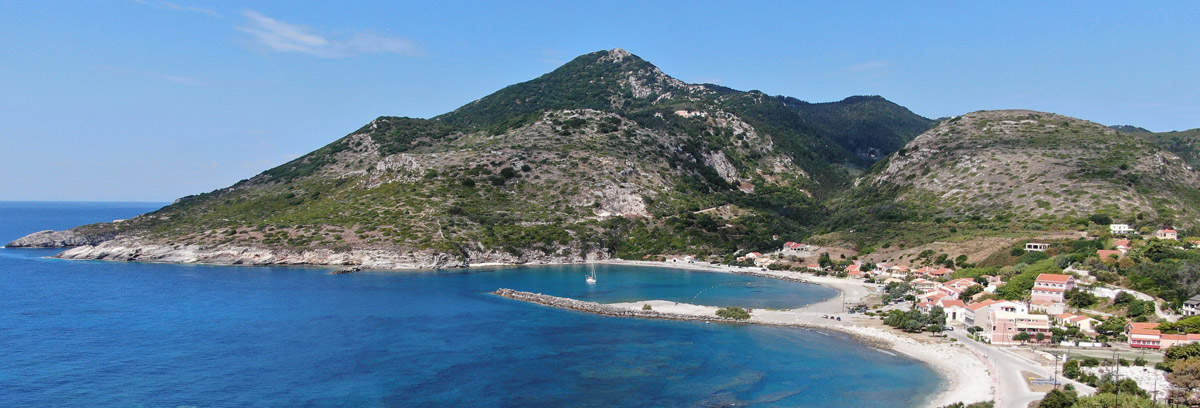
Othonoí
In antiquity, the island was named Othronós, Othonoí and Thoronós. Initially, the name Othonoí included all Diapóntia islands but over the years, the name was used only for the bigger one amongst them. For a time, the island was named “Fáros” (lighthouse), probably due to its shape, if we imagine the NW and SW part of the island being the base of the lighthouse and the NE part being the tower (a map would be of assistance here).
In general, there is not much known for Diapóntia islands, as they lived in the shadow of historic Corfu and are thus rarely mentioned in official scripts and records.
During the Homeric years (13th – 12th century BC), Othonoí was the island of Kalypsó by the name of Ogygía. During the 12th century BC, Othonoí were colonized by Elefínor, the king of Ávantes from Évvoia.
From the 11th up until the 6th century BC, Othonoí was abandoned, probably due to piratic raids. From the 5th century BC, after the sea battle of Nafpaktía (429 BC), the island was inhabited again and the natives involved themselves heavily with agriculture, using the neighbouring island of Mathráki as agricultural land.
During the Roman and Byzantine years, Othonoí was again depopulated because of the pirates raiding the area. In the 14th century AD, the island was given as a present, together with the rest of Diapóntia, from Charles III of Naples to the Corfu knight Theódoros Skalítis. After that, settlers from Corfu started to colonize the island.
When the Venetians took the island, middle of the 16th century AD, they built a castle to defend from hostiles (mainly pirates). The castle managed to defend the island many times up until the end of the 18th century. In 1797, the Franks initiated one last large scale assault, when they finally managed to destroy the castle and take over Othonoí (ruins of the castle are still visible today).
The island did not stay in the hands of the Franks for long. In 1814, Othonoí was conquered by the English who kept it up until 1864. The English, just like the Venetians before them, built hospitals, facilitated economically the islanders in order to farm the land and offered protection against the Turks. In 1864, the Diapóntia islands rejoined finally with mother Hellas.
Othonoí, up until the beginning of the 20th century, had a population of over 1000 inhabitants, however the two large wars and the hardship that fllowed them, as well as the inability of poor mother Hellas to support its distant kids, led to the census of 2011 numbering under 100 inhabitants (of which only 30 – 40 stay during winter).
Sightseeing: There are many paths in the green, dense forests of the island, which are definitely worth taking. There are also several Byzantine churches, spread all around the island.

Mathráki
In the old charts, Mathráki went by the name of “Samothráki” and “Maltháki”. The latter, in ancient greek, means coal and the island was thus named because of the many coals in its subsoil.
In general, the island followed the history of Othonoí. After all, its inhabitants were the first and main settlers on the island. Mathráki remained uninhabited for very many years up until the 17th century AD, when settlers from Paxoí and Ípiros came (previously it was used only as farming lands).
Sightseeing: Mathráki also offers many paths that cross its forests and dense vegetation. There are also two churches worth visiting, one in the N part of the island and the other on the S part.

Erikoúsa
Its earlier name was Merlera or Merlere, which derives from the Italian word Merlera (a name, does not mean something).
The history of the island remains a mystery even today and almost nothing is known about it. It has been called the “island of the heroes”, because during the 2nd world war, the islanders saved many jewish families, by hiding them from the Nazis and giving them food and shelter.
Sightseeing: The island is green, with a good network of paths that allow you to go around it in 2 – 3 hours. There are many sandy beaches and a beautiful church close to the harbour, Agía Triáda, which is worth visiting.


